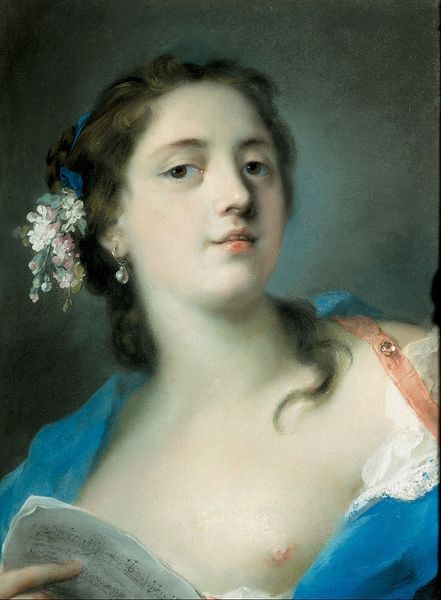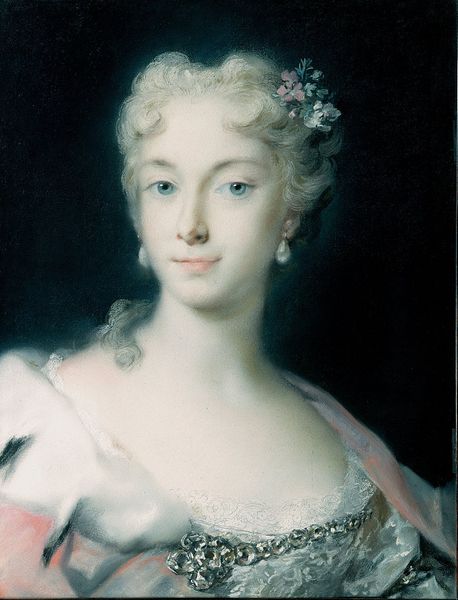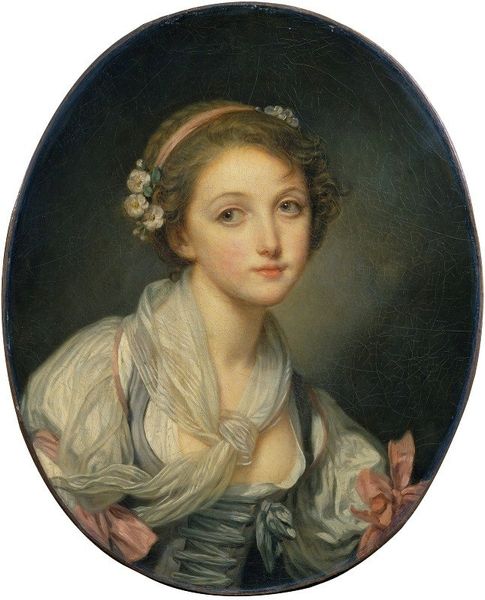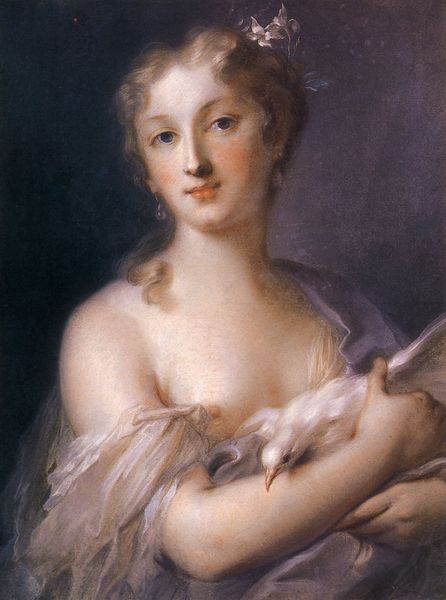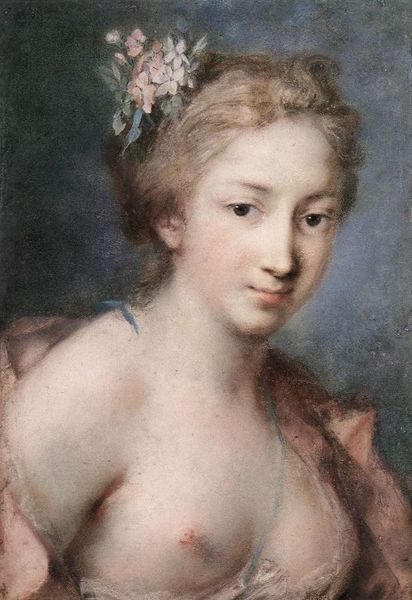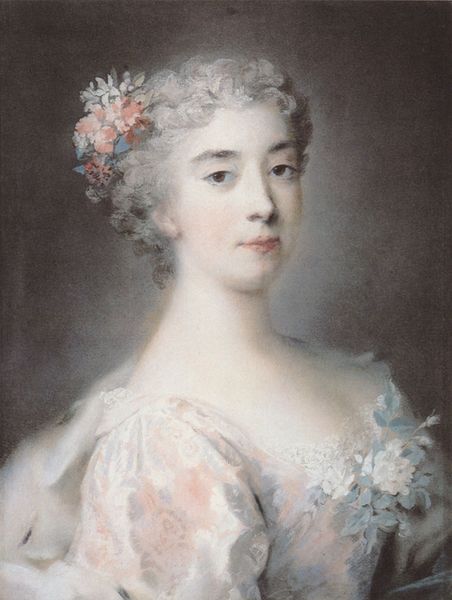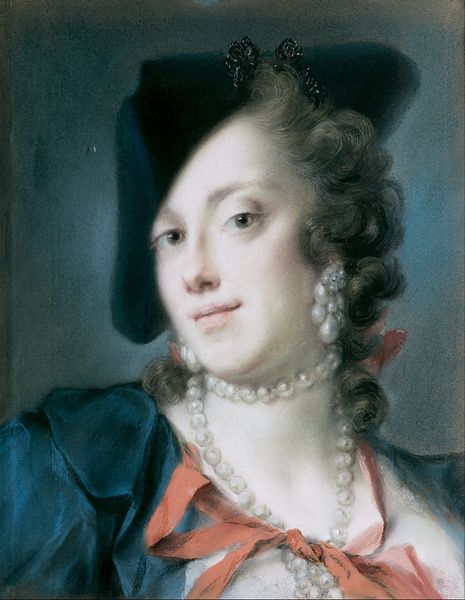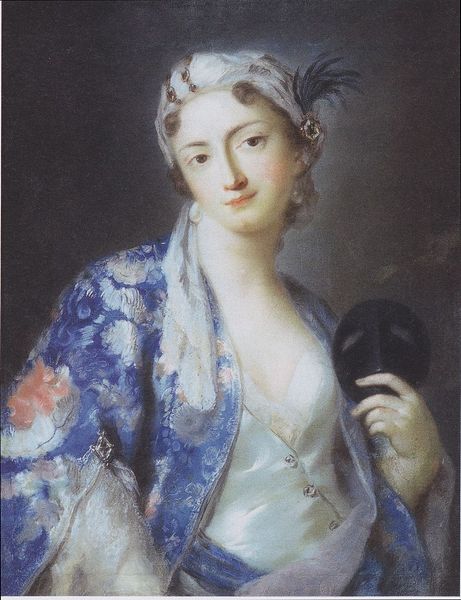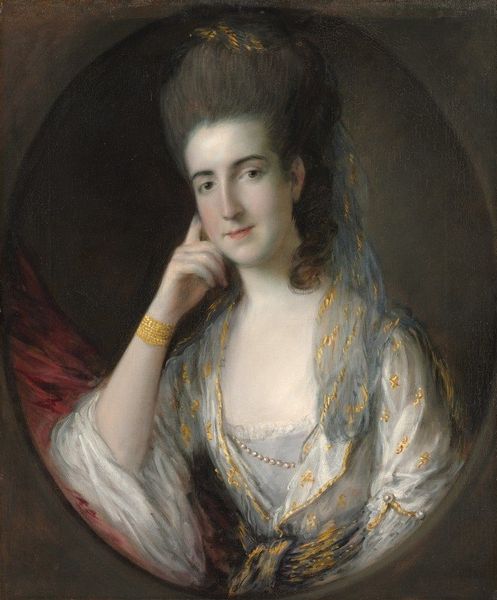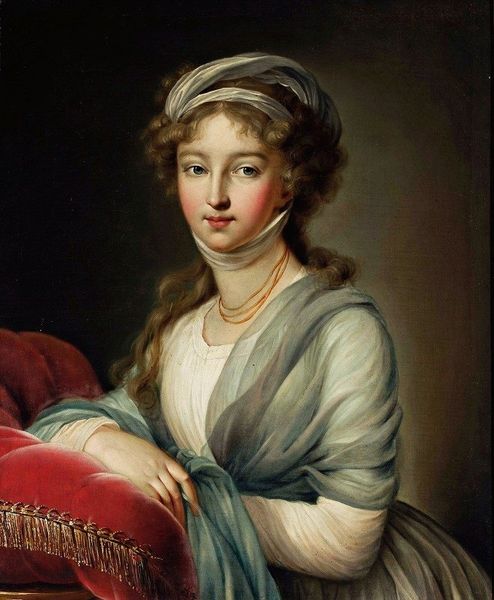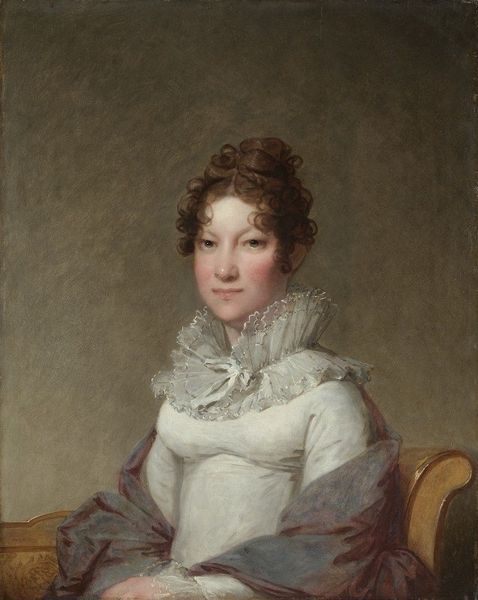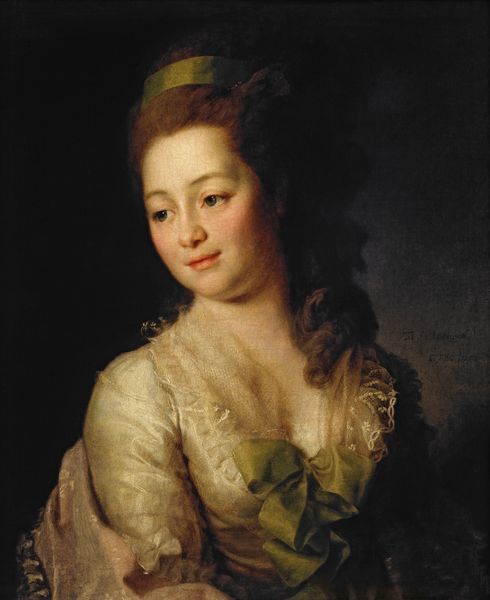
pastel
#
portrait
#
character portrait
#
head
#
face
#
portrait image
#
portrait reference
#
portrait head and shoulder
#
intimism
#
animal portrait
#
animal drawing portrait
#
pastel
#
facial portrait
#
lady
#
forehead
#
portrait art
#
fine art portrait
#
rococo
#
digital portrait
Copyright: Public domain
Editor: Let’s take a peek at Rosalba Carriera’s "A Tyrolean Innkeeper," from 1728, rendered delicately in pastel. It’s quite a poised and intimate portrait. She has such a sweet demeanor. What do you see in this piece, from your perspective? Curator: Ah, yes, isn’t she captivating? For me, Carriera's choice of pastel really sings. It lends this soft, almost ethereal quality to the innkeeper's skin, doesn’t it? Think of it - this was Venice in the 1700s. Carriera was one of the few female artists enjoying enormous success. This work reflects a particular moment when society delighted in portraying the everyday—elevating what some might deem ‘ordinary’ to the realm of fine art. Do you see how she gazes, almost like she is sharing a secret? Editor: I do! Her eyes really draw you in. It is hard to believe that pastels were able to create this! How long did this process usually take? Curator: Probably not as long as you'd imagine! It could have been accomplished relatively swiftly, lending the final image that sense of immediacy. The colors, the slightly unfocused edges. She captured something fleeting; perhaps a feeling more than an exact likeness? Editor: I hadn't thought of it that way. I was so focused on the detail of the lace cap, I overlooked that. So, beyond a pretty face, Carriera was really capturing a mood? Curator: Precisely. Carriera's innkeeper isn't just a woman. She's a whispered impression, a sentiment painted in hues of memory, really quite moving when you consider the artist's legacy, and the woman represented here. Editor: Well, I am never looking at a pastel painting the same way ever again. Curator: Fantastic! Maybe you should try pastel. The colors invite an unpolished style.
Comments
No comments
Be the first to comment and join the conversation on the ultimate creative platform.
